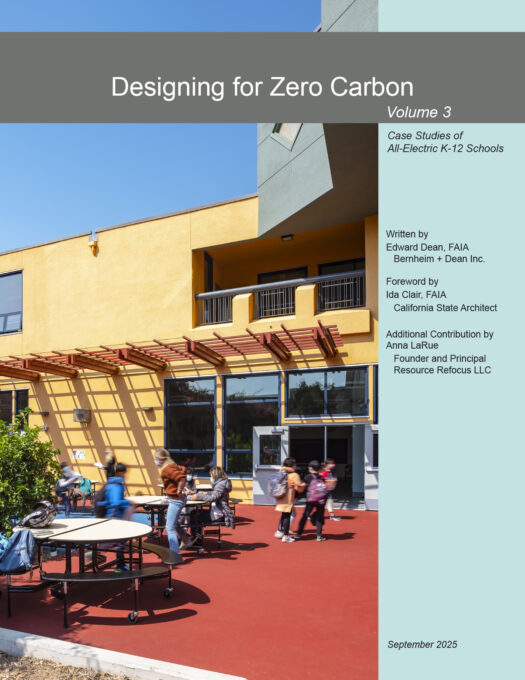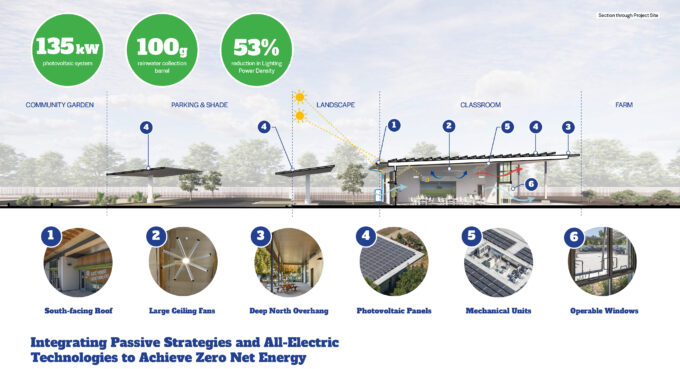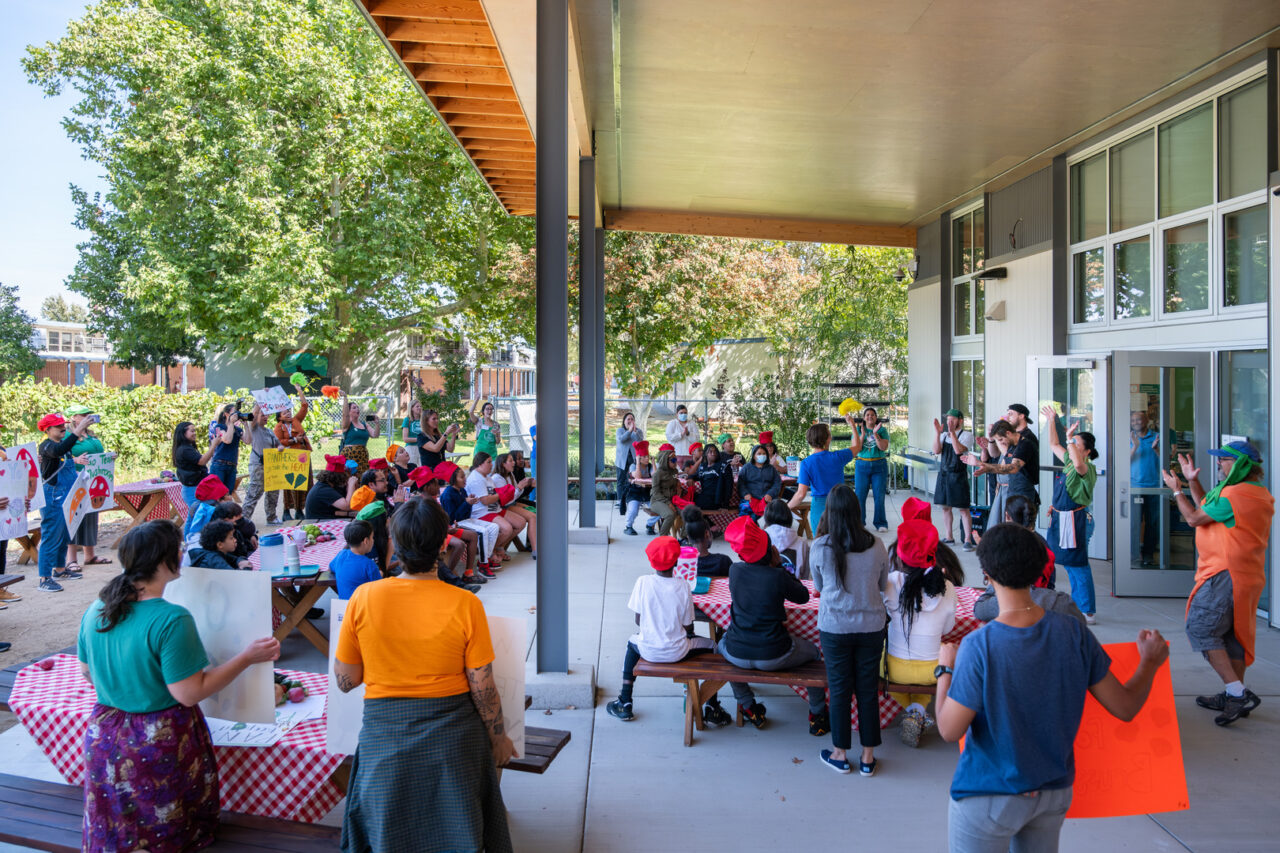Sacramento City USD’s Floyd Farms Food Literacy Center has been included in CalBEM’s (California Building Energy Modeling) 2025 book of case studies on all-electric schools, Designing for Zero Carbon, Volume 3. Floyd Farms is the district’s first Net Zero Energy project and was designed by HMC Architects. It is an innovative all-electric facility that combines a demonstration kitchen/classroom, a production kitchen, an event space, a community garden, and an urban farm, providing nutrition education to the adjacent Leataata Floyd Elementary School and to the wider community.

CalBEM is an organization dedicated to energy modeling and energy efficiency. The group is sponsored by Southern California Edison, and its membership includes a broad range of energy-related organizations, including utility companies, engineers, architects, and energy consultants. CalBEM’s purpose is to empower and promote the development of low-carbon buildings in the state.
As the first Zero Net Energy building in the Sacramento Unified School District, the design of Floyd Farms prioritized passive strategies. Windows on the south side of the building are protected from the sun, while at the north, full-height windows allow for daylight and a view. Large ceiling fans work in conjunction with operable windows to provide natural ventilation, thereby reducing the need for mechanical heating and cooling. These strategies, paired with a series of south-facing roof and canopy-mounted photovoltaic panels, significantly reduce the operational carbon associated with operating the facility.

The minimal approach to interior materials, combined with wood framing and wood structural elements, provides a reduced embodied carbon approach that complements the reduced operational carbon footprint. Through its innovative design, Floyd Farms embodies a model of sustainability, cultural relevance, and community impact, fostering lasting positive change and resilience in Sacramento and beyond.
Through its innovative design, Floyd Farms embodies a model of sustainability, cultural relevance, and community impact, fostering lasting positive change and resilience in Sacramento and beyond.
CalBEM’s eight-volume series of case study books covers an expansive range of building types to support the adoption of sustainable building design practices in California. Over the course of the series, the focus has shifted from zero net energy (ZNE) to all-electric designs, reflecting California’s goal of a carbon-free electrical grid by 2045. These books offer valuable insights for decision-making, detailed performance analysis, key images of building design, and numerous indispensable lessons learned.
These publications are funded by California utility customers and administered by investor-owned utilities under the auspices of the California Public Utilities Commission.






